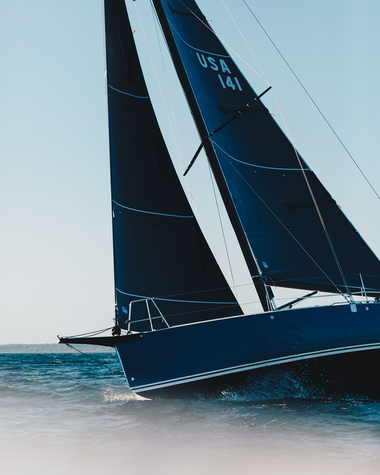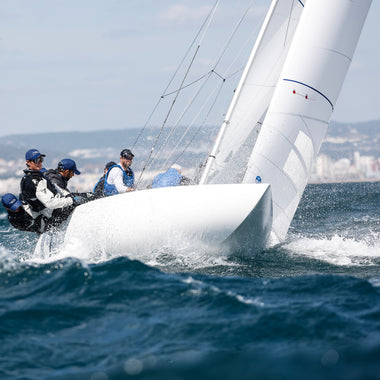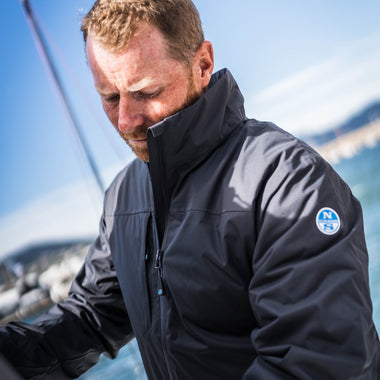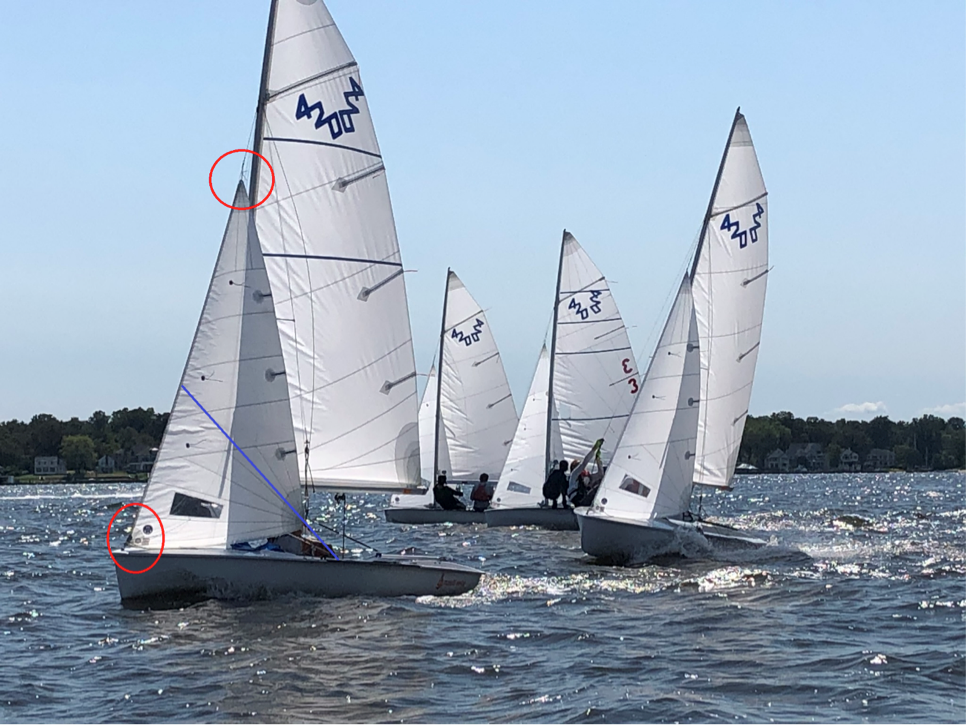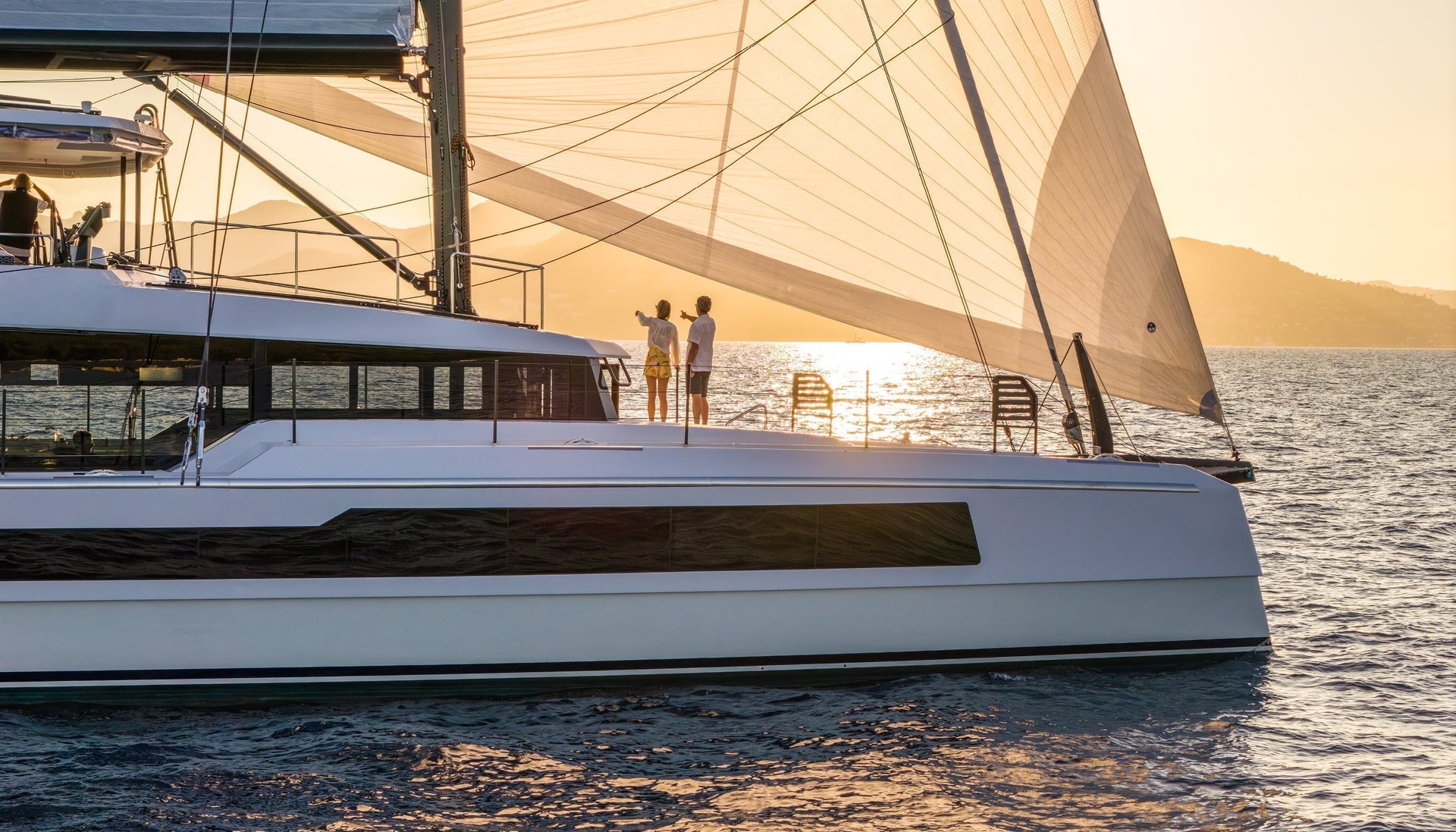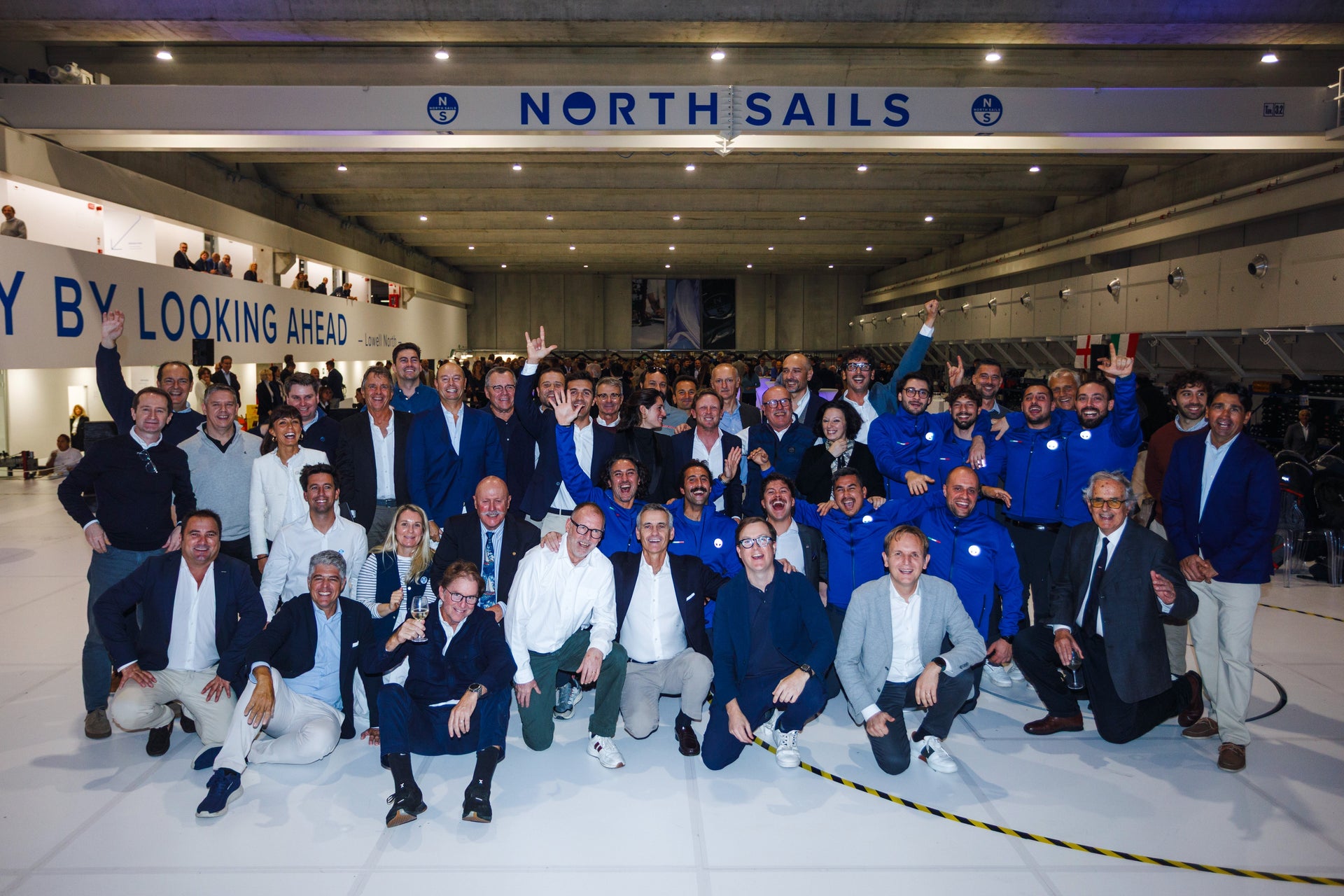I420: CONTROLLING THE JIB LEECH TENSION
CONTROLLING JIB LEECH TENSION
How to Effectively Finetune Your Fairleads with Fixed Positions

Sailing dinghies are all unique. It is always fun to go from one one-design class to another and check out what makes them different, what controls they have, and in this case, what they might not have available for the crew to use to adjust and tune.
One very important tuning device for jib trim is the fairlead position. Fairlead position defines sheeting angle for the jib, and many classes of course have adjustable fairleads; that is, the position can be moved fore and aft (or in some cases up and down, and in and out). When it gets windy, it’s often nice to be able to open the leech of the jib a little bit, and this can be achieved by moving the fairlead position aft. Conversely, moving it forward can create a more powerful shape.
The 420 was designed, for better or worse, without adjustable fairleads; it is, as they say, where it is. How do you effectively move the fairlead fore and aft in a boat with fixed fairlead positions? The answer on the i420 is jib height. To achieve this, i420 sailors can raise and/or lower the height of the jib on the luff wire to achieve proper leech tension on the jib for given conditions and mast rake.
You may notice boats in-between races that are capsized on their coach boat; often this is done to change jib height to match expected conditions for the next race. The peak rope fixed (and adjustable) at the head of the jib controls jib height. The boat also has an adjustable jib tack control to accommodate changes at the peak. Normally the jib should be fixed by having a proper deck sweeping effect. However, for the i420 class it is important to know the height should be adjusted to provide the optimum jib lead angle. Since, as we said, the sheeting point is fixed, you should adjust the peak rope to move the jib clew up or down to achieve the desired sheeting angle.
In short, lower the jib down a bit to open the leech and ease power when the winds are up; in light winds, raise the jib for more power and jib leech return. It is also imperative to remember that mast rake also has a significant effect on jib leech tension. Raking back effectively opens the jib leech, and conversely, raking forward closes it. Don’t forget this when you tune the boat.
Adding jib height to your tuning regimen can make a performance difference. Experiment, find the right balance, mark your settings, and go faster!
For more information and questions on how to match your North i420 sails perfectly, please contact North Sails clas expert Tom Sitzmann.

